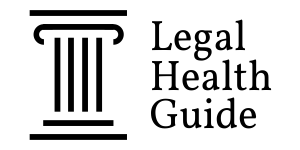Every workplace needs rules to protect people. The reasons go beyond good intentions.
You have a legal duty to follow health and safety laws and provide a safe environment for your employees. These laws exist to help prevent accidents and keep both you and your team out of harm’s way.
If you ignore these rules, you could face heavy fines, legal action, or even business closure. Most countries set strict regulations that spell out your duties and what you need to do to meet legal standards.
Want to dig deeper into the rules that affect your business? You can check out more details on health and safety management issues and find guidance on compliance in occupational health and safety.
Key Takeaways
- Legal requirements demand that you keep your workplace safe.
- Failing to do so can result in serious penalties.
- Knowing the laws helps protect your business and your team.
What Are the Legal Reasons for Health and Safety Management?

Health and safety management at work isn’t optional. You need to follow specific legal rules to protect everyone on the job, avoid lawsuits, and meet standards set in your country.
Definition and Scope
Legal reasons for health and safety management mean you have to follow laws that keep your workplace safe. These rules cover how you spot hazards, control risks, and create a safe place for all employees.
For example, many countries require you to do risk assessments and give workers the right equipment and training. These legal requirements are broad and often include criminal law, civil law, and even local rules that might be unique to your area.
If you study for NEBOSH, you’ll see how laws like the Health and Safety at Work Act apply to real workplaces. The main aim is to stop harm before it happens and to show that you take health and safety seriously.
Statutory Duties and Responsibilities
Employers and employees both have legal duties at work. As an employer, you need to make sure safe systems are in place, equipment is maintained, and your staff get information and training about hazards.
Employees have duties too, like following health and safety instructions and using personal protective equipment. Laws and regulations usually spell out these responsibilities, and skipping them can cause problems for your business.
Studying for NEBOSH or a similar qualification? You’ll learn details of these duties, like keeping records, reporting injuries, and preventing accidents. Health and safety isn’t just a moral responsibility; it’s a legal one too. Introduction to health and safety at work goes into this more.
Consequences of Non-Compliance
If you break health and safety laws, you could face serious consequences. Legal actions might include fines, court cases, and sometimes even jail time for really bad breaches.
Your business could also get shut down if authorities think you’re putting people at risk. Besides legal penalties, you might face lawsuits from injured workers or their families.
Insurance costs can jump, and your company’s reputation might take a hit if you don’t stick to legal health and safety standards. Authorities treat these issues seriously, so it’s smart to stay up to date with law changes. For more about how regulation affects workplaces, see small firm responses to regulation.
Key Legislation and Regulations

To manage health and safety properly, you need to know the main rules and standards. These laws protect workers, set clear obligations, and outline what governments and businesses must do.
International Standards and Guidelines
International rules give you a basic safety framework that works across different countries. The International Labour Organization (ILO) set out conventions like ILO Convention No. 155, which explains how to plan and improve workplace safety.
The ISO 45001 standard offers practical steps for an occupational health and safety management system. Using these international guidelines helps you create safer workplaces and lowers the risk of injury or illness.
Plenty of companies use them to show commitment, improve reputation, and meet supply chain demands. Following these standards can also make it easier to work in more than one country and keep your health and safety management consistent.
Country-Specific Legal Frameworks
Each country has its own health and safety laws. In the United Kingdom, for example, the Health and Safety at Work etc. Act 1974 says every employer must ensure the health and safety of employees and others affected by their work.
There are also rules like the Control of Substances Hazardous to Health (COSHH) and the Management of Health and Safety at Work Regulations. In the United States, the Occupational Safety and Health Act is enforced by OSHA, while Australia has its own Work Health and Safety Act.
It’s important to understand and follow your local laws because these rules are legally binding. Not following them can lead to serious penalties. To learn more about how legislation affects daily practice, see this literature review on legal compliance in occupational health and safety.
Roles of Regulators and Enforcement Agencies
Regulators and government agencies make sure health and safety laws are followed at work. Agencies like the UK’s Health and Safety Executive (HSE), OSHA in the US, and Safe Work Australia inspect workplaces, investigate accidents, and enforce penalties when rules are broken.
These organizations provide guidance, training materials, and set minimum standards. Sometimes you need to report certain incidents or health risks directly to these bodies.
They make sure businesses protect workers and maintain legal standards. When you follow requirements set by these agencies, you lower risks for your employees and avoid legal action.
This also helps build a strong safety culture at work, which is essential for good health and safety management. For more about management and legal reasons for compliance, see this independent review of health and safety legislation.
Ethical and Legal Considerations in Health Information Management

Health information management covers both legal duties and ethical obligations. Keeping accurate records, protecting privacy, and maintaining safety help build patient trust and prevent legal risks.
Balancing Legal Compliance and Ethics
You need to follow laws that control how health data is used, stored, and shared. Examples include HIPAA in the United States and the GDPR in Europe.
These laws set strict rules for patient privacy, data security, and informed consent. But just following the law doesn’t always cover everything.
You’re expected to use ethical judgment, especially when laws leave some gray areas. For instance, you might face questions about how much information to share with families or when to report a health risk.
It’s a balance between rules and what feels right for your patients. Many professionals turn to codes of ethics from groups like the American Health Information Management Association (AHIMA) for guidance.
These codes help you decide what to do when legal demands seem to conflict with your duty to protect patient welfare.
Confidentiality and Data Protection
Protecting patient information is one of your top duties. Patients need to trust that their records, test results, and personal details stay safe.
You should use strong safeguards like data encryption, secure passwords, and regular access audits. Limiting who can see patient files is also important.
Legal concerns focus on the right of patients to know how their data is used and to make choices about access. Ethical concerns go even further, asking you to guard against accidental leaks or misuse—even if you haven’t technically broken a law.
Security failures can damage trust and lead to lawsuits or penalties. Staying up to date with privacy and ethical guidelines is necessary to keep your patients’ health information safe.
Employer Obligations and Worker Rights

Employers must create safe workplaces under the law. Employees have rights that protect their well-being.
Understanding these legal duties and protections helps you stay safe and know your responsibilities at work.
Employer Duty of Care
You need to take reasonable steps to protect the health and safety of anyone affected by your work activities. This means spotting hazards, assessing risks, and putting effective controls in place.
If you don’t meet this duty, you can face fines, legal action, or even jail. Your legal duty of care covers employees, contractors, and sometimes visitors too.
Some key responsibilities are:
- Providing safe equipment and machinery
- Ensuring proper training and supervision
- Maintaining a safe working environment
- Monitoring and reviewing safety protocols
Laws such as the Health and Safety at Work Act set these standards. For more on legal duties and frameworks, see the Introduction to Health and Safety at Work and this article on health and safety management obligations.
Employee Participation and Rights
You have the right to a workplace free from serious, recognized hazards. This means you should know about workplace risks, get proper instructions, and have a say in health and safety issues.
Speak up about hazards, suggest improvements, and refuse unsafe work without worrying about retaliation. Laws let you join safety committees, look at risk assessments, and use safety equipment.
Your rights include:
- Access to safety information and training
- Participation in safety decision-making
- Protection against discrimination for raising safety concerns
Health and safety management isn’t just top-down; you help shape it too. If you’re curious, check out your rights and what your employer owes you under employer responsibility for occupational health and safety and current OHS legislation.
Risk Assessment and Management Requirements
Risk assessment and management sit at the heart of workplace health and safety. Law requires these steps to help cut down on injuries and illnesses at work.
Complying with these rules protects your business from lawsuits and financial hits. It just makes sense.
Legal Requirements for Risk Assessments
The law says you must spot hazards and assess risks at work. In many places, like the UK, regulations such as the Management of Health and Safety at Work Regulations 1999 make risk assessments a must for employers, especially if you have five or more people on the team.
Legal standards expect you to do what’s reasonably practicable to keep folks safe. You need to balance the risk against the time, trouble, and cost of controlling it.
If something goes wrong and you haven’t met this standard, you could face criminal charges or big fines. Insurance companies and contracts might also want written risk assessments.
Skipping these steps can bump up your costs through higher insurance or lawsuits. There’s a good discussion on the reasonably practicable test in risk assessments if you want to dig deeper.
Procedures for Managing Workplace Hazards
Start managing hazards by figuring out all the possible sources of harm. Think machinery, chemicals, or bad work habits.
Once you spot hazards, look at how likely they are to hurt someone and how bad the harm could be. After that, choose controls—maybe change how a job gets done, add safety devices, or hand out personal protective gear.
Review these controls regularly to make sure they’re still working. Keep records of what you do to meet legal requirements and protect your business.
Written policies and risk assessments can show compliance if inspectors come knocking. Training your team on these procedures isn’t just smart—it’s the law and helps avoid accidents.

Training, Supervision, and Competence Standards
Managing workplace health and safety means you need to cover training, supervision, and competence. These standards help keep risks low and workers safe.
Legal Mandates for Training
Laws in places like the UK and Australia require you to give information, instruction, and training to workers. Every worker should know about workplace hazards and how to handle them.
You can’t just hope people pick things up on the job or rely on common sense. You need to:
- Figure out what training each role needs
- Train people before they start new tasks or use new equipment
- Refresh training, especially when things change
Inspectors might check your training records. If you can’t prove you’ve trained your team, you could face legal trouble or fines.
Following NEBOSH’s guidance helps you meet these expectations. Companies that skip training see more accidents and get penalized if workers get hurt.
Want more details? See Australia’s model WHS laws and the UK’s take on competence in health and safety law.
Supervision to Meet Legal Obligations
Supervision isn’t just about overseeing work—it’s a legal must when safety is on the line. Make sure supervisors have up-to-date knowledge and skills to enforce rules and guide others.
A good supervisor will spot unsafe actions, fix mistakes before accidents, and help new or inexperienced workers. Laws expect supervisors to set the example for safe behavior.
Competence doesn’t just happen; it comes from training and proof on the job. Pick people who can explain policies and act fast if they see risks.
Some industries see more injuries and lawsuits when supervision is weak. Having trained and competent supervisors is a big deal, and research backs up the link between good supervision and legal compliance in places like construction. For more, check the study on supervisor competency and health and safety induction.
Documentation and Reporting Requirements
Employers have to keep accurate records and report incidents. This isn’t just about following the law—it helps make work safer and avoids big penalties.
Statutory Record-Keeping
The law says you need to keep certain health and safety documents. These usually include risk assessments, safety policies, training records, and equipment inspection logs.
Regulations like the Health and Safety at Work Act tell you how long to keep these records. Inspectors can ask to see your policies or accident books to check you’re following the rules.
If you don’t keep these documents, you could get fined or face legal action. Many countries also require you to review and update your records regularly.
For more on this, see the manager’s guide to health and safety at work.
Key documents to keep:
- Accident and incident records
- Risk assessments
- Training certificates
- Maintenance logs
- Safety meeting minutes
Incident Reporting Obligations
If someone gets hurt, there’s a dangerous event, or illness strikes at work, you need to report it to the right authority fast. Usually, this means filling out forms or using official online systems.
Not reporting incidents can land you in legal hot water. You have to report major injuries, work-related diseases, deaths, or incidents involving the public.
For example, under the UK’s Reporting of Injuries, Diseases and Dangerous Occurrences Regulations (RIDDOR), you must report certain events. Timely, complete reports help authorities spot trends and prevent future harm.
For more, check out legal, health, and safety reporting requirements in different countries.
Key points for incident reporting:
- Report within the set deadline
- Keep copies of all submitted reports
- Make sure your staff know when and how to report events
Legal Consequences and Enforcement
Employers who ignore health and safety laws can face harsh legal action. If accidents or injuries happen because safety steps were skipped, workers and the public can hold you responsible.
Penalties for Breaches
Ignoring health and safety rules can bring fines, improvement notices, or even orders to stop work until you fix things. Serious violations may mean huge financial penalties.
In really bad cases, business leaders could even end up in jail if negligence leads to serious harm or death. Regulators like the Health and Safety Executive can inspect your workplace at any time.
If they find problems, you might get formal warnings or orders to make immediate improvements. Repeat offenders usually get tougher penalties and stricter enforcement. Learn more about the deterrent effects of enforcement in workplace safety.
Litigation and Liability
If unsafe conditions hurt someone or make them sick, you could get sued for damages. This might mean paying for medical bills, lost pay, or emotional distress.
Lawsuits can come from workers, visitors, or even outsiders affected by what happens at your workplace. Court cases are costly, time-consuming, and can wreck your company’s reputation.
Legal liability isn’t just for companies—owners, managers, and supervisors can be held responsible if they ignore their duties. For more, see details on legal compliance in occupational health and safety and how it affects daily performance.
Emerging Trends in Health and Safety Legislation
Health and safety laws keep shifting to tackle new risks and rising expectations. It’s smart to stay aware of how these changes might affect your legal duties and everyday work.
New Legal Developments
Recent updates in health and safety laws focus on new hazards—think chemicals, technology, and mental health. Some places now require regular reviews and updates to safety protocols for these new challenges.
Legislation is pushing for clearer documentation. You need to record and report incidents and risks more closely, which helps inspectors see how you handle hazards.
Privacy and data protection now shape how you gather and store health info. There are more detailed rules for handling workplace injuries and reporting them to local authorities.
These changes match trends in recent health and safety legislation and policies in different regions.
Mental health and well-being are getting more attention too, so the definition of workplace risk is broader now. Both physical and psychological hazards matter more than ever.
Implications for Organizations
You have to keep up with constant changes in regulation. Regular training and updated workplace procedures help your practices stay compliant.
Non-compliance can bring fines, legal trouble, or damage your organization’s image. It’s not just about avoiding punishment—safe working conditions show you care about your employees.
Employers need a proactive mindset and should focus on steady improvement to meet new legal standards. Update risk assessments, policies, and training as things change.
Following new laws builds trust with your staff and shows leadership in health and safety. That’s the kind of example set by organizations with strong occupational health and safety management standards.
Staying compliant keeps your business running, cuts down on workplace accidents, and can boost your reputation.
Frequently Asked Questions
Legal requirements shape how you manage health and safety at work. Laws and regulations define your responsibilities and set minimum standards.
They also spell out the penalties for not following the rules.
What are the legal consequences of non-compliance with health and safety regulations?
If you break health and safety laws, you might face fines, legal action, or even jail. Non-compliance can lead to business closure or lawsuits from injured workers.
Government agencies can investigate, prosecute, and penalize your business if you miss legal standards. You can dig deeper into these issues in Legal, Health, and Safety Issues.
How do workplace health and safety laws protect employees?
Health and safety laws make you create a safe working environment. The law protects employees by forcing you to control risks and provide safety training and equipment.
If a workplace injury happens, employees may get compensation and support through legal systems.
What are the employer’s legal obligations regarding health and safety management?
You need to assess workplace risks, prevent hazards, and reduce harm. Your duties include providing training, reporting accidents, and following rules about equipment and chemicals.
These legal requirements aim to reduce injuries and illnesses at work.
Which international legal frameworks guide health and safety management?
International organizations set standards for health and safety at work. The International Labour Organization (ILO) offers key conventions and recommendations.
Many countries use ILO guidelines as a basis for their own laws and policies.
How does health and safety legislation impact business operations?
Legal requirements shape how you organize work, train staff, and maintain equipment. If you meet these requirements, you limit your risk of fines or shutdowns.
Failing to follow legislation can cause disruptions and extra costs, as seen in health and safety management problems.
In what ways do legal requirements influence health and safety policies within organizations?
You have to create and update policies to follow the law. Legal requirements push you to review risks, write procedures, and keep records.
This usually leads to safer work practices and can improve your company’s reputation. You can find more guidance on policy development in health and safety management: principles and best practice.
Conclusion
Managing health and safety means you meet legal requirements. Following the law isn’t really a choice, is it?
Your organization needs to protect workers and visitors under national and local rules. If you ignore health and safety laws, you could face fines, lawsuits, or even criminal charges.
This kind of trouble puts your business at risk and can really damage your reputation. Criminal law exists to protect everyone in the workplace, so you’ve got to meet these expectations to operate legally.
Want more detail? Check out this health and safety management guide.
Legal standards mean you need to take reasonable care and avoid negligence. That shows you’re responsible and helps keep the workplace safer for everyone.
If you know your obligations, you can set up clear policies, train your team, and cut down on accidents. Here’s a review of legal compliance that digs into how legal rules shape daily performance.
Some key legal reasons for managing health and safety:
- Protection from legal action
- Meeting criminal and civil law standards
- Safeguarding workers and the public
- Building trust with staff and clients
Laws change all the time, so it’s smart to stay updated. Review your health and safety practices regularly to make sure you’re still on track.








